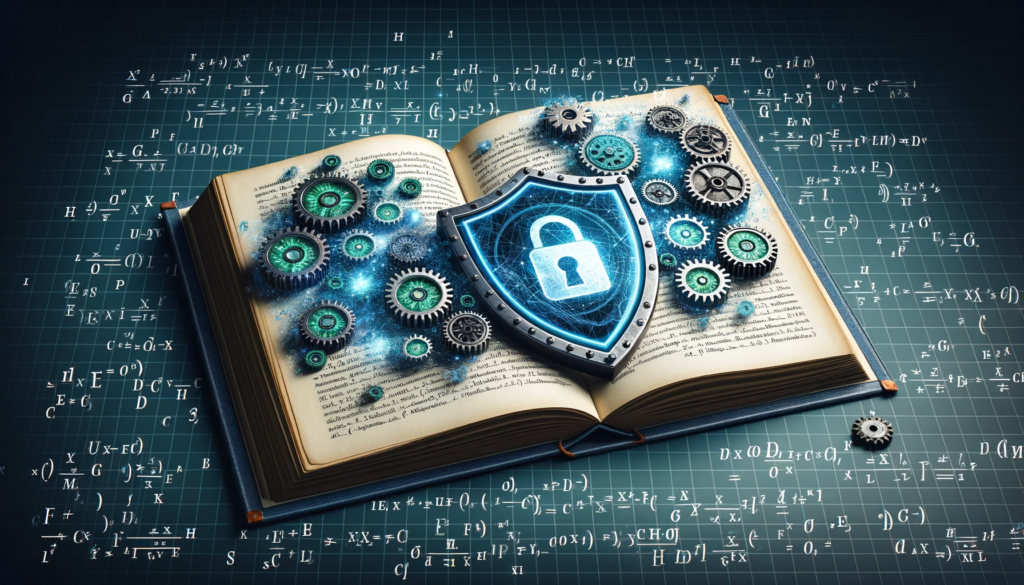
You’ve likely heard about encryption, but do you truly understand it? It’s not just tech jargon tossed around by cybersecurity experts. It’s a critical tool that safeguards your digital life.
In this article, you’ll navigate into the complex world of encryption, uncover its types and algorithms, and discover its role in your everyday life.
You’ll also explore the benefits and controversies surrounding it.
Ready to decode the mysteries of encryption?
Table of Contents
- What Is Encryption?
- Types of Encryption
- Encryption Algorithms
- How Does Encryption Work
- What Is the Purpose and Benefits of Encryption
- Encryption in Everyday Life
- Challenges and Controversies Around Encryption
What Is Encryption?
Encryption is a process you use to convert data into a code to prevent unauthorized access.
It uses algorithms and a key to transform the original information into an unreadable format. Without the key, you can’t decipher the encoded data. It’s a powerful tool that forms the backbone of cybersecurity efforts worldwide.
Types of Encryption
There are different types of encryption, each with its own strengths and weaknesses:
- Symmetric encryption
- Asymmetric encryption
- Hash functions
Understanding these will help you better comprehend the depth and breadth of encryption technologies. Each type has its unique characteristics, usage, and role in ensuring data security.
1. Symmetric Encryption
Symmetric encryption is a form of encryption that uses a single key for both encryption and decryption processes. It’s a simple, efficient, and fast method, making it ideal for large amounts of data.
The most common symmetric encryption algorithms include the Advanced Encryption Standard (AES), Data Encryption Standard (DES), and the Blowfish algorithm. They’re all known for their robustness and security.
However, symmetric encryption’s primary drawback is key distribution. If the symmetric key encryption is intercepted during transmission, your data can be compromised. Therefore, it’s important to securely share the key between parties.
Despite this, symmetric encryption remains a cornerstone in ensuring secure data communication.
2. Asymmetric Encryption
Asymmetric encryption, often referred to as Public Key Cryptography, uses two different keys at once – a combination of a public key and a private key.
The public key, as the name suggests, is made available to everyone. It’s used to convert the original information into a coded format.
On the other hand, the private key is kept secret by the owner and is used to decode the information.
The real strength of asymmetric encryption lies in the fact that you can share your public key with anyone without compromising your private key, thus ensuring secure communication.
3. Hash Functions
Hash functions is a special category that provides a unique way to secure data. Unlike other encryption methods, hash functions don’t use a cryptographic key. They employ an encryption algorithm to transform input data into a fixed-size string of characters, which is the hash value. This value is virtually impossible to reverse-engineer, ensuring the confidentiality of your data.
The fascinating thing about hash functions is their consistency and uniqueness. The same input will always produce the same hash, but even a minor change in the input creates a drastically different hash. This feature makes hash functions indispensable in data integrity checks, password security, and digital signatures.
Encryption Algorithms
We’ll discuss different popular encryption algorithms and how they contribute to secure communication.

What Is an Encryption Algorithm?
An encryption algorithm is a set of rules that dictate how encryption and decryption occur. It governs how data is transformed from a readable format into an unreadable one, ensuring its security. Encryption algorithms are the complex, mathematical formulas you’ll find at the heart of any encryption process.
In essence, an encryption algorithm is the backbone of data security.
Popular Encryption Algorithms
You’re likely aware of popular encryption algorithms such as AES, RSA, DES, SHA, Blowfish, and Twofish.
There are various types of encryption algorithms, each with its own unique approach to securing data. The choice of encryption algorithm can greatly affect the security of your data, so it’s important to understand their differences and how they work.
1. AES (Advanced Encryption Standard)
Originating as a replacement for the outdated Data Encryption Standard (DES), the Advanced Encryption Standard (AES) has become one of the most widely adopted symmetric encryption algorithms in the world. Its introduction arose from the need for a more robust encryption standard, as DES became increasingly vulnerable to cryptanalytic attacks.
One of AES’s standout features is its adaptability, supporting key lengths of 128, 192, and 256 bits. This flexibility allows organizations to strike a balance between encryption strength and processing efficiency. Furthermore, the algorithm utilizes multiple rounds of encryption, enhancing its security. This comprehensive approach to safeguarding data, combined with its efficient design, has made AES a cornerstone in modern encryption methods.
2. RSA (Rivest-Shamir-Adleman)
At its core, RSA’s strength is rooted in the inherent complexity of factoring large numbers. Essentially, while it’s straightforward to multiply two prime numbers, breaking down their product back into these original primes is computationally taxing. This mathematical asymmetry is the heart of RSA’s security.
In RSA, two keys are employed: the public key, which is shared openly, and the private key, kept secret. Data encrypted with the public key can only be decrypted by the corresponding private key, ensuring secure communication. This dual-key mechanism has facilitated various applications, from securing email communications to authenticating transactions in online banking.
3. DES (Data Encryption Standard)
DES is a symmetric algorithm that uses the same encryption keys to both encrypt and decrypt data.
Initially popular in the ’70s, its 56-bit key size is now considered weak against modern attacks. However, DES’s influence is still seen in later, more secure iterations like Triple DES.
4. SHA
Part of a broader family of cryptographic hash functions, SHA’s main objective isn’t just to obscure data, but to generate a fixed-size hash value or ‘digest’ from any set of data, no matter its length. This digest serves as a unique identifier, akin to a digital fingerprint, for the data it represents.
What sets SHA apart from other encryption mechanisms is its sensitivity to data modifications. Even the most minuscule change to the original data — be it the alteration of a single character — will produce a hash that’s vastly different from the original. This characteristic is paramount in ensuring data integrity. It means that any tampering or corruption of the data, whether accidental or malicious, is immediately evident when the hash value doesn’t match expectations.
5. Blowfish and Twofish
Blowfish, introduced in the early ’90s, swiftly became an encryption favorite due to its speed and efficiency. Designed as a symmetric block cipher, Blowfish’s adaptive architecture allowed it to process vast quantities of data rapidly, rendering it ideal for both software and hardware applications that demanded nimble encryption capabilities.
However, with the changing landscape of cyber threats and the relentless push for even more resilient encryption methods, the same innovator behind Blowfish introduced its successor: Twofish. While preserving the best traits of its predecessor, Twofish integrated advanced security features. It operates on a block size of 128 bits and supports key sizes up to 256 bits, making it substantially harder to penetrate.
How Does Encryption Work
You need to understand that encryption operates through two main types: symmetric and asymmetric.
The Difference Between Symmetric and Asymmetric Encryption
Symmetric encryption uses a single key, known as a symmetric key, for both the encryption and decryption of data. It’s fast and efficient, but if the key is compromised, your data is at risk.
On the other hand, asymmetric encryption algorithms utilize a pair of keys: a public key for encryption and a private key for decryption. This method is more secure as the decryption key remains private. However, it’s slower due to the complexity involved.
Key Management
Managing your encryption keys effectively is vital to ensuring your data’s security. Encryption key management is the governance and control of the lifecycle of cryptographic keys. It involves generating, using, storing, archiving, and deleting keys. Key management is a critical aspect of your organization’s encryption strategy because the security of your encrypted data directly depends on it.
If your organization’s encryption keys are compromised, the corresponding encrypted data could also be compromised. Therefore, you need to implement robust key management practices, which include secure key generation, distribution, storage, and replacement. Regular auditing and timely updates are also essential to maintain the security and efficacy of your encryption keys.
Cryptographic Protocols
Cryptographic protocols come into play to manage how the encryption and decryption process happens. They set the rules for how data is converted into a secret code and back again. These protocols ensure data integrity, confidentiality, and authentication. For instance, the Secure Sockets Layer (SSL) protocol ensures secure data transfer between web servers and browsers.
What Is the Purpose and Benefits of Encryption
Its primary functions include ensuring secure transactions, enabling identity verification, and facilitating the use of digital signatures.
1. Cybersecurity and Defense
For starters, encryption ensures data protection, transforming your sensitive information into unreadable text. It’s a formidable barrier against cybercriminals, making your data useless if intercepted.

Remember, cybersecurity isn’t just about avoiding threats, it’s about resilience, and encryption provides that. Even if a breach occurs, your encrypted data remains secure. It’s like having a safe that can’t be cracked even if stolen.
2. Digital Signatures
A digital signature serves as your unique identifier, ensuring the authenticity of the digital data you’re sending or receiving.
Public key cryptography is the underlying mechanism that makes digital signatures possible. When you send data, you use your private key to sign the data. The recipient then uses your public key to verify the signature. If it checks out, the data is authenticated, and the recipient can trust its legitimacy.
Digital signatures not only authenticate, but also maintain the integrity of the data, as any modification after the signing invalidates the signature. Therefore, digital signatures are essential in establishing trust and security in the digital world.
2. Secure Transactions
When dealing with online transactions, encryption plays a big role in ensuring your sensitive information isn’t intercepted or altered by malicious entities. Secure transactions are dependent on strong data encryption protocols.
Whether you’re making an online purchase or accessing your bank account, encryption makes these transactions secure. It’s the digital equivalent of a lock on your front door, keeping your personal data safe from intrusion.
3. Identity Verification
When you’re logging into an online account, encryption ensures that your password isn’t intercepted or tampered with, thus verifying your identity. It’s like a digital handshake, establishing trust between two parties.
Without this level of data security, anyone could pretend to be you online, accessing sensitive information and causing irreparable damage. Through encryption, you’re not just protecting your data, you’re safeguarding your identity.
Encryption in Everyday Life
You encounter encryption in your day-to-day life more often than you might realize. From browsing the web to making digital payments, and even in safeguarding your personal data, encryption plays a crucial role.
1. Browsing the Web
Every time you’re browsing the web, numerous encrypted interactions are happening behind the scenes. These are made possible by a technology known as secure sockets layer (SSL), or its more modern version, transport layer security (TLS).
SSL/TLS are protocols that encrypt data exchanged between your browser and the websites you visit, making your internet browsing secure.
You’ll recognize SSL/TLS-encrypted sites by the https in the URL and the padlock icon in your address bar. Thus, encryption plays an integral role in keeping your online activities secure.
2. Digital Payments
Making digital payments, you’re likely using encryption without even realizing it. Every time you tap, click, or swipe to make a transaction, secure data transmission is at play. It’s the encrypted data that ensures your payment details remain confidential, preventing unauthorized access.
Encryption is the silent guardian in the world of digital payments, protecting your financial data from cyber threats. So, the next time you make a digital payment, remember, you’re utilizing a powerful tool that provides both convenience and security.
3. Personal Data Protection
Any data stored on your device, sent via email or shared in a cloud storage, if encrypted, becomes unreadable to anyone without the decryption key.
Imagine your personal data as a locked cabinet. Encryption is the lock, and the decryption key is, well, the key. Without it, your sensitive information is just a jumble of unreadable characters. So, whether you’re sending a private email or storing important documents, encryption keeps your personal life, truly personal.
Challenges and Controversies Around Encryption
Consider the friction between encryption and law enforcement. This issue arises because encryption can make it difficult for law enforcement agencies to access the communications of potential criminals or gather evidence for investigations. On one hand, encryption is crucial for protecting the privacy and security of individuals and businesses. On the other hand, law enforcement argues that this encryption can hinder their ability to prevent and solve crimes.
Another challenge is the risk of misuse by malicious actors. While encryption is meant to protect sensitive information, it can also be used by criminals and terrorists to hide their activities. This poses a significant challenge for governments and security agencies who must balance the need for privacy with the need for national security.
Additionally, encryption has economic implications. Many businesses and industries rely on encryption to protect their intellectual property, trade secrets, and financial data. Without strong encryption, these entities would be vulnerable to cyberattacks and data breaches, which could have severe financial and reputational consequences. However, encryption can also create barriers for law-abiding users when it comes to accessing or sharing information.
FAQ
Can Someone Break Encryption?
Theoretically, given unlimited time and computational resources, any encryption can be broken. However, with strong encryption techniques in place, achieving this could span millennia, making it impractical for any adversary to attempt within a human lifetime.
Can Hackers See Encrypted Files?
Hackers can potentially access and see encrypted files if they breach a system, but understanding or interpreting the content within is a different challenge. Think of it like seeing a securely locked treasure chest: you’re aware of its presence, but without the right key, the contents remain a mystery. In the digital world, this “key” is the decryption tool required to make sense of the encrypted information.
What Is the Best Encryption Method?
When it comes to determining the “best” encryption method, it’s essential to recognize that the choice often hinges on specific needs and use cases. While some scenarios prioritize swift encryption and decryption processes, others might prioritize the utmost security. That said, certain encryption standards, such as AES-256, have garnered wide acknowledgment for their robustness and reliability across various applications.
Can Encrypted Data Be Decrypted?
Absolutely, encrypted data can be decrypted, but the process necessitates the right decryption key. Unauthorized decryption, on the other hand, is a daunting challenge. An individual would either need to break the encryption, a feat that’s computationally intense and time-consuming, or get their hands on the decryption key, which is typically kept under stringent security measures.
Conclusion
So, you’ve now explored the world of encryption. From understanding its purpose to exploring its types and algorithms, you’ve seen how it safeguards your data.
It’s integrated into your everyday life, offering numerous benefits. But remember, it’s not without challenges and controversies.
Stay informed and vigilant, as the world of encryption is ever-evolving and increasingly crucial in our digital age.
Save 10% on SSL Certificates when ordering today!
Fast issuance, strong encryption, 99.99% browser trust, dedicated support, and 25-day money-back guarantee. Coupon code: SAVE10



























